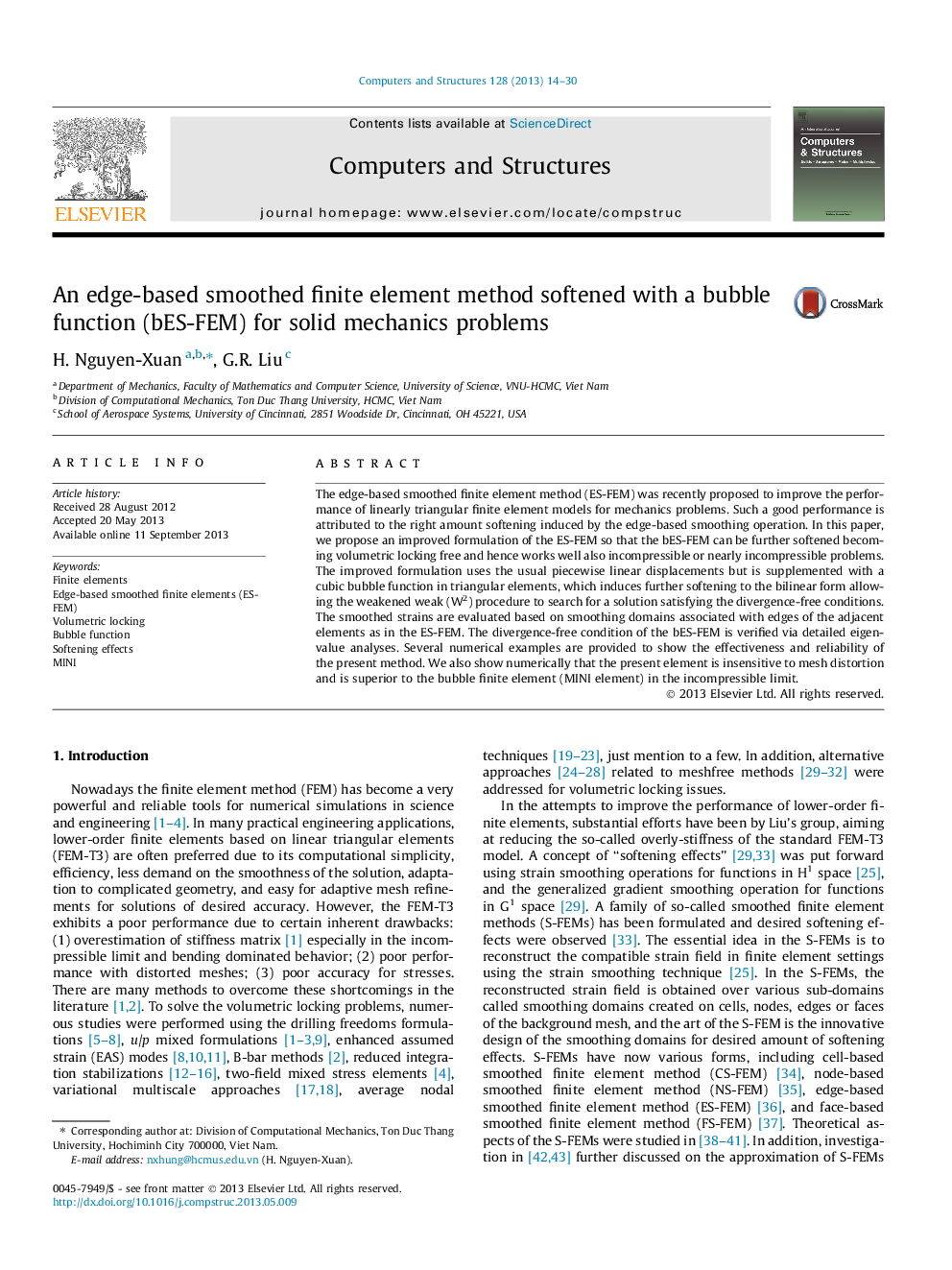| کد مقاله | کد نشریه | سال انتشار | مقاله انگلیسی | نسخه تمام متن |
|---|---|---|---|---|
| 511125 | 865818 | 2013 | 17 صفحه PDF | دانلود رایگان |

• We propose an improved formulation of the edge-based smoothed element method (ES-FEM).
• The original ES-FEM formulation is supplemented with a cubic bubble function in triangular elements.
• The stiffness matrix is evaluated using smoothed strains over edge-based smoothing domains.
• The method is free from both volumetric and bending locking and works well with extremely distorted mesh.
• Numerical results show the highly effective performance of the present method.
The edge-based smoothed finite element method (ES-FEM) was recently proposed to improve the performance of linearly triangular finite element models for mechanics problems. Such a good performance is attributed to the right amount softening induced by the edge-based smoothing operation. In this paper, we propose an improved formulation of the ES-FEM so that the bES-FEM can be further softened becoming volumetric locking free and hence works well also incompressible or nearly incompressible problems. The improved formulation uses the usual piecewise linear displacements but is supplemented with a cubic bubble function in triangular elements, which induces further softening to the bilinear form allowing the weakened weak (W2) procedure to search for a solution satisfying the divergence-free conditions. The smoothed strains are evaluated based on smoothing domains associated with edges of the adjacent elements as in the ES-FEM. The divergence-free condition of the bES-FEM is verified via detailed eigenvalue analyses. Several numerical examples are provided to show the effectiveness and reliability of the present method. We also show numerically that the present element is insensitive to mesh distortion and is superior to the bubble finite element (MINI element) in the incompressible limit.
Journal: Computers & Structures - Volume 128, November 2013, Pages 14–30